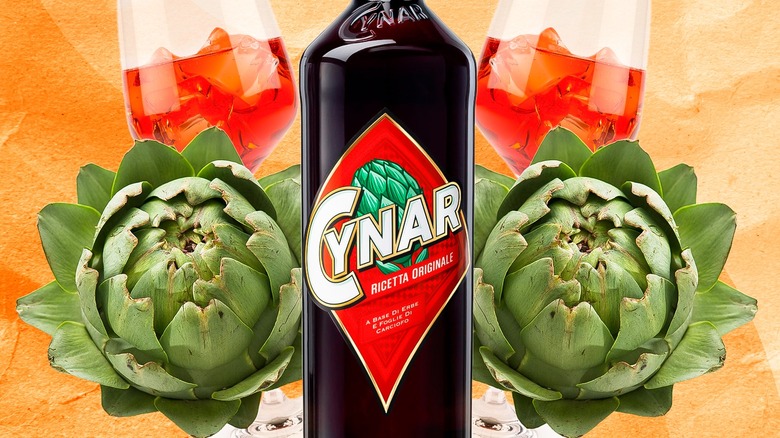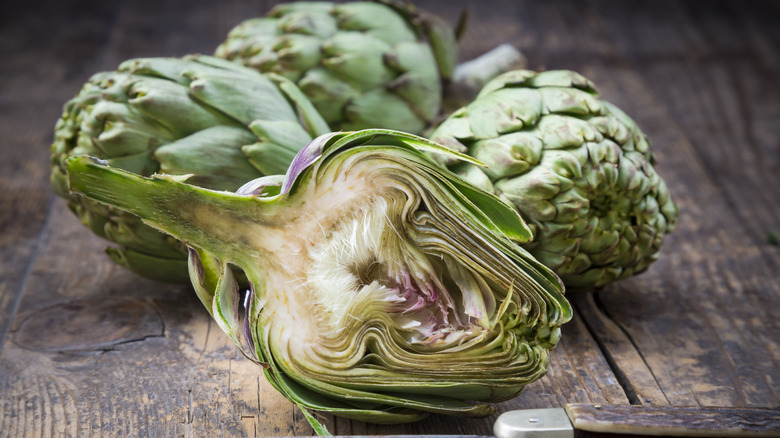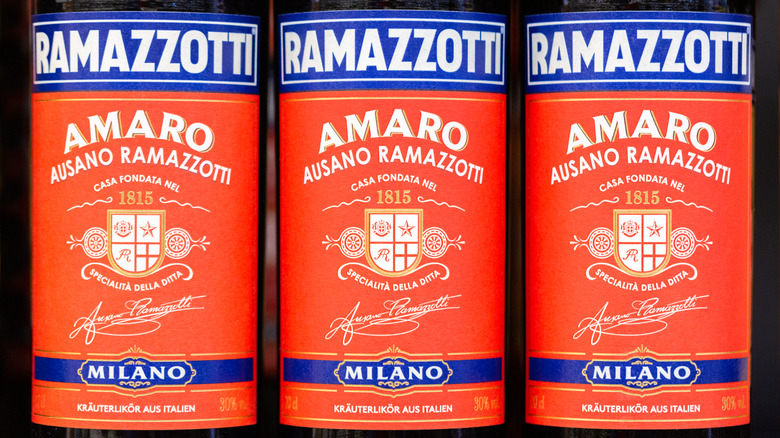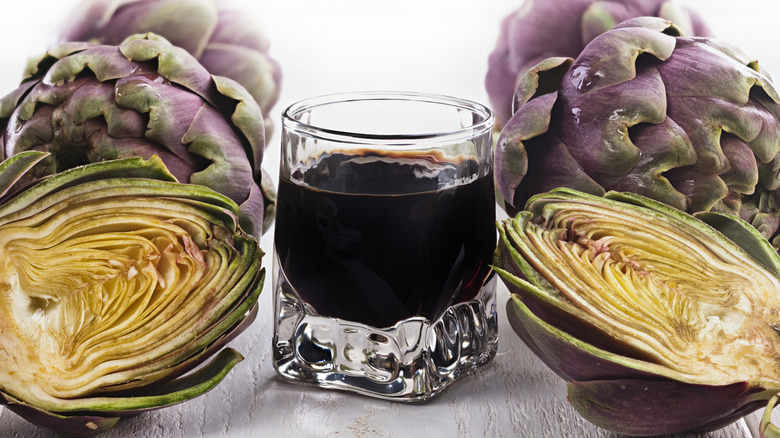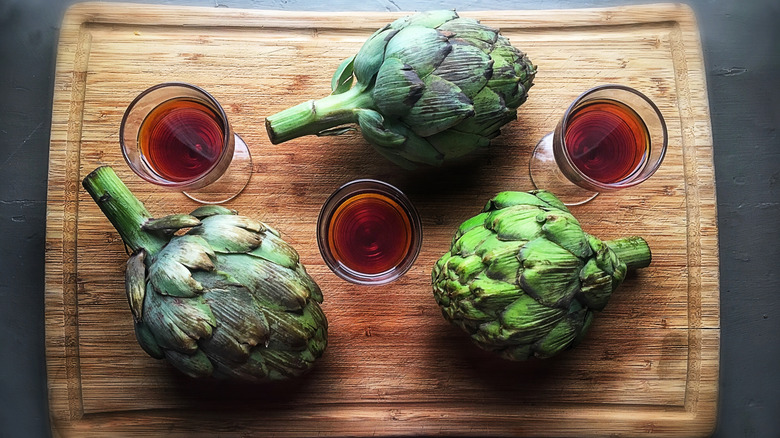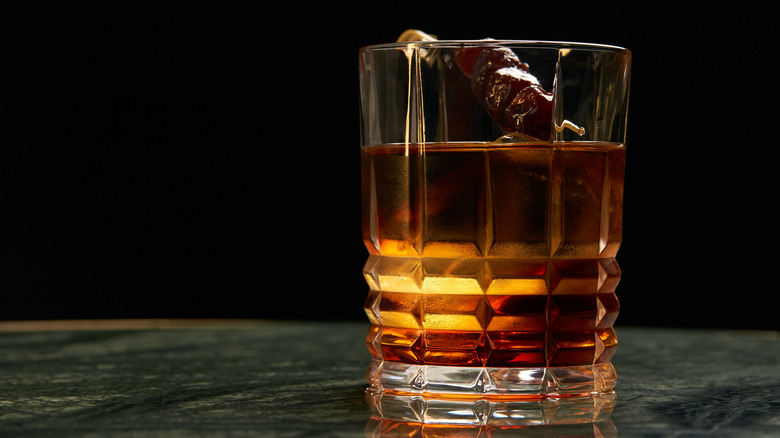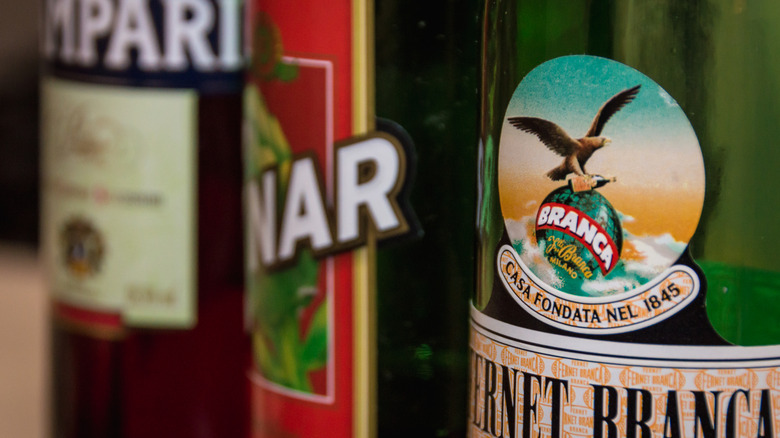Cynar: The Complex Vegetable Amaro Your Bar Cart Needs ASAP
We may receive a commission on purchases made from links.
Artichokes are delicious in many forms: stuffed with breadcrumbs and cheese, steamed and dipped in garlic butter, and soaked in olive oil and chile peppers — but as the main ingredient in liqueur? You might be surprised to discover that there is a liqueur made from this spiky vegetable. It's called Cynar (pronounced chee-nar), and it's an example of an Italian amaro. You might recognize the term "amaro" as referring to a specific kind of alcohol that is usually bitter or bittersweet and syrupy in texture. Many amari are consumed as aperitivi (pre-dinner appetite stimulants) or digestivi (after-dinner digestives). One of the most popular kinds of amaro is Aperol, that bright orangey-pink liqueur that Italian tourists love to have in a refreshing spritz. So if you're a fan of Aperol or any other kind of amaro, it might be worth it to add Cynar to your bar cart.
Does Cynar really taste like artichokes? No. But it does add a complex, bitter, and vegetal component to cocktails — and bartenders are fond of Cynar when experimenting with creating new drinks. It's kind of different and sophisticated — and the bottle looks fantastic on the shelf. Be that friend who whips up something truly interesting and special. Read on for some tasty recipes as well as a comprehensive guide to this unusual liqueur that just might become your favorite ingredient.
What is Cynar?
Cynar is an amaro, which is a bitter Italian liqueur. Some well-known amari include Aperol, Campari, and Fernet-Branca, but there are a multitude of Italian bitters out there — and some people even make their own. While the ingredients in amari are usually secret, bitters are typically made from a combination of herbs, spices, roots, flowers, and citruses. Cynar is a bitter made from 13 ingredients with artichoke leaves as the standout. Because of the inclusion of artichoke leaves, Cynar is classified as a carciofo amari, "carciofi" being the Italian word for artichokes.
Cynar and other amari are believed to aid in gut-related issues, and Italian bitters are used to stimulate the appetite, help digestion, and even calm an unruly stomach. They are an important part of the Italian dinner experience, both in terms of health and cultural significance. Many Italian amari are classified as either pre-dinner or post-dinner, but Cynar can be used as both an aperitivo and digestivo, which makes it kind of unique. At 16.5%, Cynar has a moderate ABV, which is why it can be had both before and after a meal. If you're looking for more of a punch, Cynar is also made in a stronger formula called Cynar 70. This higher proof version is intended to be consumed as a proper drink of its own. It's been described as less bitter when compared to the original Cynar.
What is an Italian amaro?
An amaro is an Italian liqueur usually made with herbs and spices — usually a mysterious and secret mixture that creates an often bittersweet flavor. Some herbs, spices, and fruits found in amaro may include citrus peels, star anise, cloves, cardamon, fennel, bark, saffron, lemon verbena, vanilla, rose petals, cinnamon, elderberry and so much more. Each amaro has its own special blend kept under lock and key. There are lots to choose from depending on your flavor palate or what you are using the amaro for, so if you try one and don't like it, don't be discouraged.
Hundreds of years ago, amari had a medicinal purpose. However, now amari are usually had after dinner as a digestivo — a drink to help you digest that massive Italian meal you've just had. As we noted, Cynar can also be used an aperitivo. You can also mix an amaro into cocktails, like that famous Aperol Spritz or the Negroni, which contains Campari. Many Italian and Italian American families will bring out amaro with an after-dinner espresso shot or right after coffee and linger at the table. It's a cultural ritual meant to encourage you to slow down at the end of the day and spend time with your family or friends.
The history of Cynar
Cynar was invented in 1952 in Padua, Italy by entrepreneur and philanthropist Angelo Dalle Molle. He wanted to create an amaro using the artichoke for its nutritional benefit as well as its sexy history (in ancient folk medicine, the artichoke is considered to be an aphrodisiac). He did — and Cynar was born. Speaking of sexy artichokes, the name "Cynar" also has an interesting lexical history that may date back to Greek mythology. One story explains that Zeus fell for a girl named Cynara and transformed her into a goddess so she could come to Mount Olympus. But Cynara was bored up there and returned home without Zeus' permission. This angered Zeus, who trapped her body in scales and left only the heart — the first artichoke.
Cynar is a relatively new amaro, as some companies are over 200 years old and part of the fabric of Italian culture. According to the brand's website, advertising played a huge role in Cynar's success. TV commercials starring Italian actor Ernesto Calindri were shown on "Carosello," which was a broadcast show on the air from 1957 to 1977. Cynar's ads were comedic in tone, and Calindri was famous — the combination really worked at getting people to take a chance on the amaro newcomer. The slogan was also catchy: "Contro il logorio della vita moderna" or "Against the stress of modern life." In 1995, Cynar was purchased by the Campari Group.
What does Cynar taste like?
Okay, there is literally a picture of an artichoke on the label, but don't expect Cynar to taste like an artichoke. It's not just an alcohol made with artichokes — there are 13 other ingredients included, and they are pretty well blended. Some drinkers have called Cynar "medicinal" but added that it's not overwhelmingly rough on the palate. Others have noted a spiciness. Cynar is widely considered vegetal and earthy in taste, and it is bittersweet like most Amari.
Maybe you're just getting into bitters and are hesitant, hearing the uninitiated speak of getting childhood cough syrup vibes from these kinds of liqueurs. Cynar is a gentle introduction. In general, it's a pretty balanced amaro and mild with a 16.5% ABV. You can enjoy it at room temperature, as is traditional, or with ice. Bartenders rave about Cynar, explaining that its unique taste actually makes it a favorite of cocktail creators who either enjoy it neat or incorporate it into creative drinks.
Cocktails made with Cynar
So what are some of the drinks you can make with Cynar? Depending on the taste you want, there are many different ways to use Cynar in a cocktail. Many bartenders can swap out a more traditional bitter, like Campari, for Cynar. There are simple classics and complicated mixtures. Let's start with the simple — because sometimes, simple is all you need. One of the most iconic Cynar cocktails is basically half parts Cynar and half parts fresh grapefruit juice. For an interesting spritz, use grapefruit soda and prosecco — or you could just go the way of a traditional spritz with Cynar, prosecco, and club soda (everyone having an Aperol Spritz will want to know what's in your glass). Then there's the Cynar Negroni, which is a twist on the original recipe substituting Cynar for Campari.
Then there are more adventurous examples that are fast becoming classics. The Bensonhurst is a cocktail created by New York City bartender Chad Solomon. This is a variation of the Brooklyn and calls for rye whiskey, dry vermouth, maraschino liqueur, and Cynar. There's the Sin Cyn. This cocktail is made from equal parts Scotch whisky, Cynar, and sweet vermouth. Many bartenders seem to like pairing Mezcal with Cynar, and the Smoke Show is an example of how exciting the results can be. This drink is made with Mezcal, Cynar, Green Chartreuse, lemon juice, simple syrup, and an egg white. Then, cinnamon is sprinkled on top.
Where to buy Cynar
You don't have to go to Italy to buy Cynar — it's basically sold at most liquor stores and available online at places like Total Wine, Wine.com, Instacart, and elsewhere depending on where you are located. Cynar comes in the regular 33 proof in a 1-liter bottle in price range from between $35 to $40. Cynar also comes in a special 70 proof, which is darker in color.
When you get your lovely, bold red bottle of Cynar, where should you keep it? When storing Cynar, it is traditionally kept at room temperature. It's not recommended to keep Cynar in the refrigerator (or at very high or low temperatures). You should store Cynar in a cool, dry place. You can of course serve it with ice or cold if you or your guests prefer. There's no right or wrong way to enjoy Cynar, but you do want to keep it at optimal deliciousness for as long as possible.
